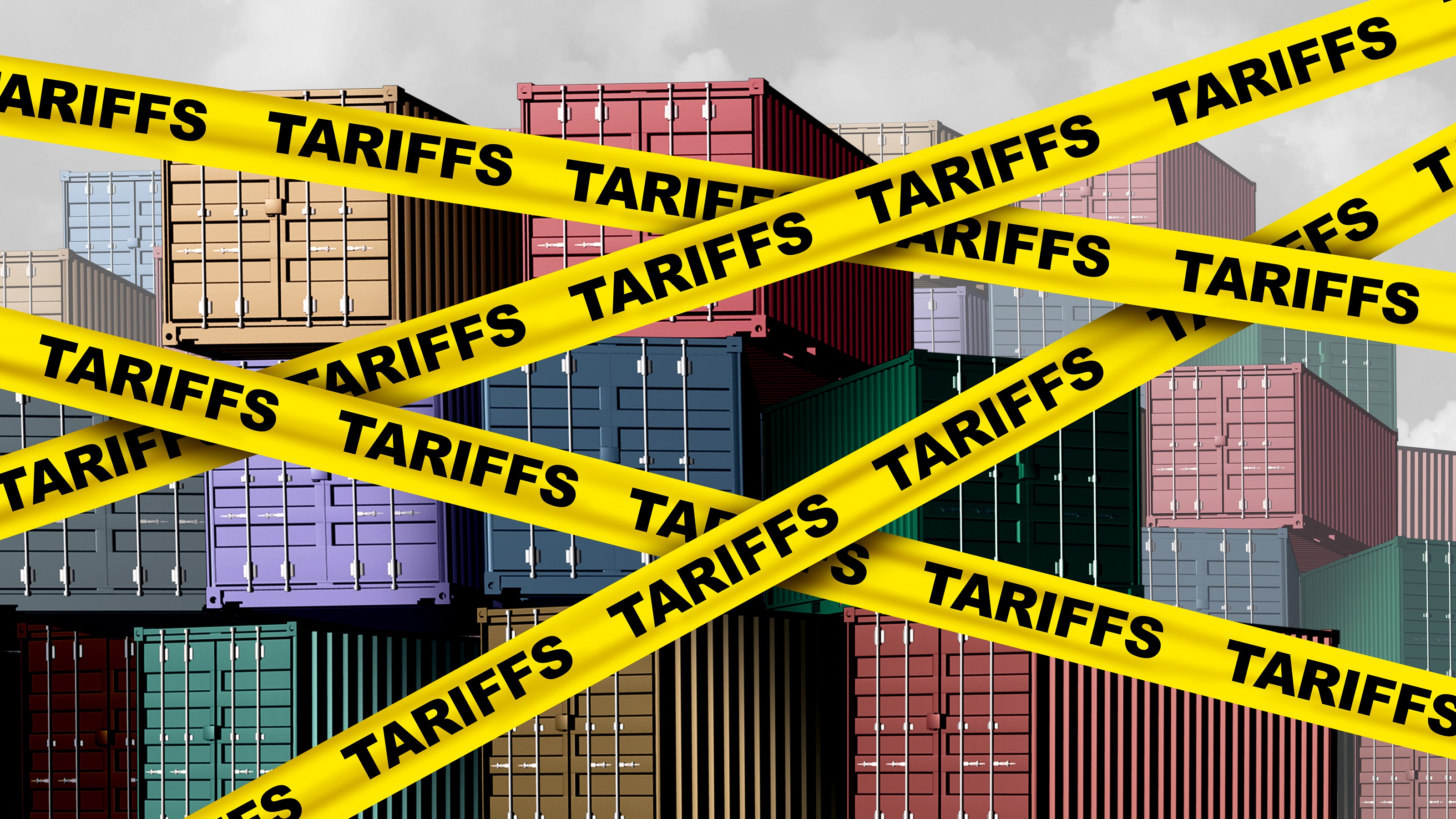How You Can 'TAP' into Home Equity to Help Keep Your Retirement Stable
When used judiciously, a home equity line of credit, or HELOC, can be a tool to help retirees control their taxes and can serve as a potential backstop when unexpected expenses hit.

Retirees face plenty of financial challenges these days, from volatile markets that can upend their security to low interest yields that in some cases don’t even allow them to keep up with inflation.
But with all the issues that confront them, perhaps the most significant financial burden is this one: taxes. After all, many retirees — and people approaching retirement — have stashed much of their savings in traditional IRAs or 401(k)s, which are tax-deferred methods for accumulating wealth. Also, taxpayers may elect to use other tax-deferred accounts in order to avoid interest, dividends and capital gains from spilling onto their tax returns. These methods can allow taxpayers to potentially lower their income and taxes.
However, once we “turn on the faucet” and withdraw money from these tax-deferred accounts, additional income will need to be claimed on our tax returns.

Sign up for Kiplinger’s Free E-Newsletters
Profit and prosper with the best of expert advice on investing, taxes, retirement, personal finance and more - straight to your e-mail.
Profit and prosper with the best of expert advice - straight to your e-mail.
That is, unless the retirees take steps that will help them reduce how much they owe the government. After all, designing a strategic income plan to help mitigate the tax burden of income in retirement is an essential, but often neglected, part of financial planning.
I refer to such a plan as “TAP,” or tax-advantaged payout. One lesser-known tool to consider tapping into for tax-free income is a home equity line of credit, or HELOC, on your home.
Here are two scenarios in which a HELOC may make sense in your retirement:
IRA drawdown.
Consider the example of an average married retired couple wanting to stay in the 12% tax bracket as joint filers. They can take up to $78,950 of taxable income from their IRAs to stay under this threshold in 2019, and that amount increases to $103,350 after adding the standard deduction of $24,400. Then, for any additional funds they may need during the year, they can tap into the HELOC. For example, if they take $15,000 out, they will actually receive $15,000 tax-free.
By comparison, taking the same amount from their IRA would push them into the 22% tax bracket, resulting in $3,300 in federal taxes being due in addition to any state or local income taxes. Thus, they may only receive roughly $10,000 after taxes from their IRA withdrawal. Not only is the HELOC tax-free, the interest rate charged on a HELOC is generally low at this point in time. In addition, depending on what you use the money for, that interest may be tax deductible, and repayments can be planned over a multiyear term to be covered by future IRA distributions or other investment income. This strategic “TAP” approach spreads out the tax impact to continuously stay under tax bracket thresholds, keeping as much of your money in your hands as possible.
Emergency money.
Unexpected expenses can crop up throughout a lifetime, whether for significant home repairs, health care needs or other costly surprises. If you do not have the funds available in a checking or savings account, don’t let the emotion of a stressful emergency drive you to make impulsive (and costly) financial decisions. Rather than turning to a high-interest credit card or cashing out investments at an inopportune time in the market, a HELOC can be a smart place to turn. This can give your financial adviser time to plan an exit strategy rather than rushing to liquidate securities. This also allows time to design a repayment plan that maximizes both tax and investment advantages to your favor.
As a bonus potential savings opportunity, if you are considering purchasing a new home or refinancing an existing home, you may consider setting up a HELOC at the same time. Many banks will offer a discounted or “free” HELOC closing, making it an even more cost-effective tool to consider.
Of course, like most things in life a HELOC does have disadvantages. For example, the interest rate is variable, which means the monthly payment can be unpredictable, especially during times of rising interest rates.
While there are other ways to leverage the equity of your home to create cash flow in retirement, a HELOC may be most desirable for some retirees, based on its flexibility for scenarios such as future downsizing or the potential need for assisted living facilities down the road.
In short, a HELOC can be a powerful tool as part of a proactive and comprehensive cash-flow plan in retirement.
Ronnie Blair contributed to this article.
Disclaimer
Investment advisory services are offered through Calibre Investment Management, LLC, a Registered Investment Adviser. For a list of full disclosures, please click here and scroll to the bottom of the page.
Get Kiplinger Today newsletter — free
Profit and prosper with the best of Kiplinger's advice on investing, taxes, retirement, personal finance and much more. Delivered daily. Enter your email in the box and click Sign Me Up.

Pete Lang is an Investment Adviser Representative and president of Lang Capital, with offices in Hilton Head and Charlotte, N.C. Now retired from the public practice of law and accounting after 20 years, Pete specializes in assisting his clients with investment, retirement and tax-planning strategies.. His background makes him uniquely qualified to handle the most complex retirement, tax and estate plans.
-
 Stock Market Today: Trump Retreats, Markets Rejoice
Stock Market Today: Trump Retreats, Markets RejoiceStocks rally, yields soften, the dollar rises, and even beaten-down names enjoy the wages of potential trade peace.
By David Dittman
-
 In Trump’s Economy Should 401(k) Savers 'Set It and Forget It?'
In Trump’s Economy Should 401(k) Savers 'Set It and Forget It?'It’s hard to bury your head in the sand when the markets are volatile. Here’s when it makes sense and when it doesn’t.
By Donna Fuscaldo
-
 Bouncing Back: New Tunes for Millennials Trying to Make It
Bouncing Back: New Tunes for Millennials Trying to Make ItAdele's mournful melodies kick off this generation's financial playlist, but with the right plan, Millennials can finish strong.
By Alvina Lo
-
 Early-Stage Startup Deals: How Do Convertible Notes Work?
Early-Stage Startup Deals: How Do Convertible Notes Work?Some angel investors support early startups by providing a loan in exchange for a convertible note, which includes annual interest and a maturity date.
By Murat Abdrakhmanov
-
 SRI Redefined: Going Beyond Socially Responsible Investing
SRI Redefined: Going Beyond Socially Responsible InvestingNow that climate change has progressed to a changed climate, sustainable investing needs to evolve to address new demands of resilience and innovation.
By Peter Krull, CSRIC®
-
 Here's When a Lack of Credit Card Debt Can Cause You Problems
Here's When a Lack of Credit Card Debt Can Cause You ProblemsUsually, getting a new credit card can be difficult if you have too much card debt, but this bank customer ran into an issue because he had no debt at all.
By H. Dennis Beaver, Esq.
-
 Going to College? How to Navigate the Financial Planning
Going to College? How to Navigate the Financial PlanningCollege decisions this year seem even more complex than usual, including determining whether a school is a 'financial fit.' Here's how to find your way.
By Chris Ebeling
-
 Financial Steps After a Loved One's Alzheimer's Diagnosis
Financial Steps After a Loved One's Alzheimer's DiagnosisIt's important to move fast on legal safeguards, estate planning and more while your loved one still has the capacity to make decisions.
By Thomas C. West, CLU®, ChFC®, AIF®
-
 How Soon Can You Walk Away After Selling Your Business?
How Soon Can You Walk Away After Selling Your Business?You may earn more money from the sale of your business if you stay to help with the transition to new management. The question is, do you need to?
By Evan T. Beach, CFP®, AWMA®
-
 Two Don'ts and Four Dos During Trump's Trade War
Two Don'ts and Four Dos During Trump's Trade WarThe financial rules have changed now that tariffs have disrupted the markets and created economic uncertainty. What can you do? (And what shouldn't you do?)
By Maggie Kulyk, CRPC®, CSRIC™